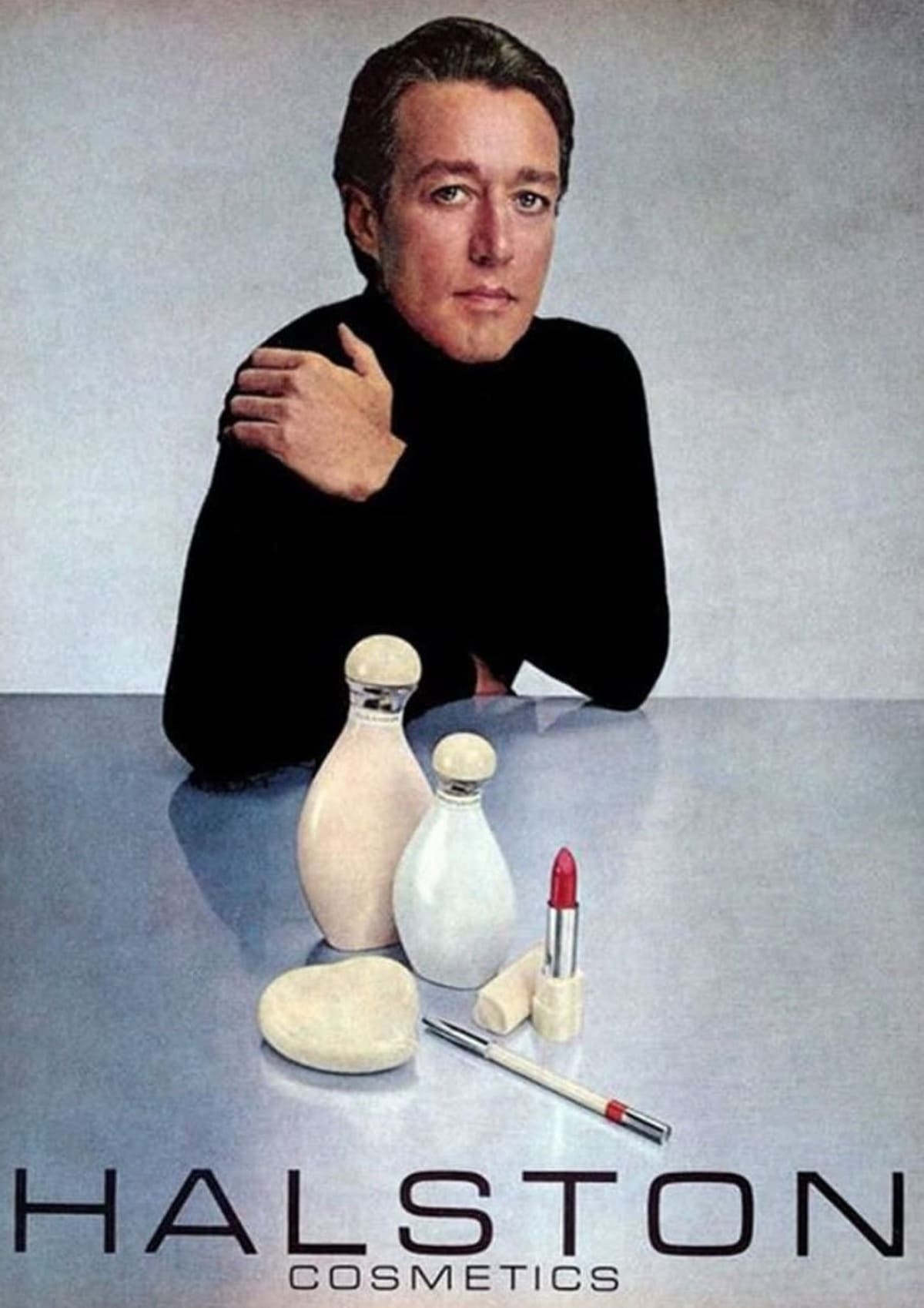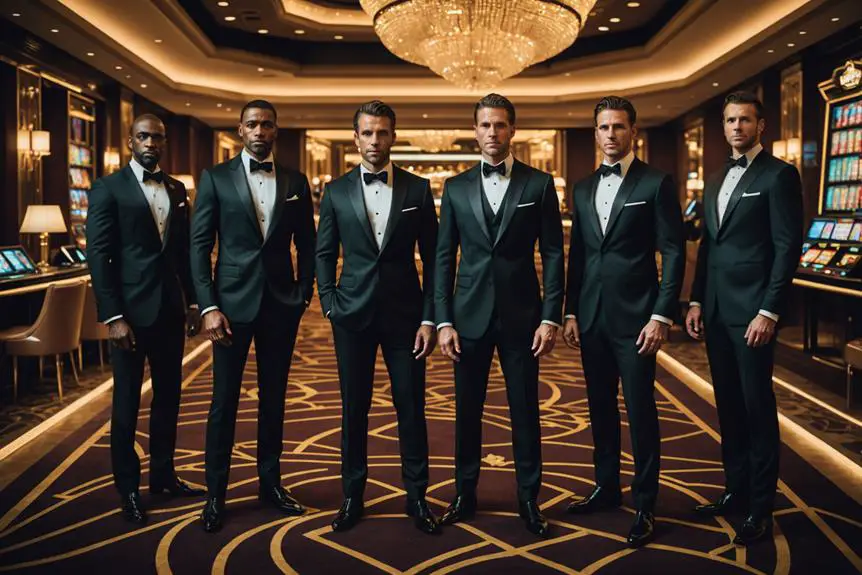Halston, born Roy Halston Frowick in 1932, is a name that remains synonymous with the glamour and elegance of American fashion in the 1970s. Rising to international fame, Halston’s minimalist and sleek designs embodied the era’s effortless chic, creating a signature style that defined a generation. Known for his pioneering use of luxury materials like cashmere and ultrasuede, Halston’s designs were favored by the most stylish women of the time. His close friendships with icons like Liza Minnelli and Bianca Jagger helped further his influence in both the fashion and celebrity world, with the designer often photographed at legendary venues like Studio 54. His work captured the freedom and sophistication of urban American life, a legacy that still resonates in fashion today.
Before becoming the household name associated with flowing dresses and innovative fabric choices, Halston first made his mark in the world of millinery. His career took off in the early 1960s when he designed the pillbox hat worn by Jacqueline Kennedy at her husband’s inauguration. By the late 1960s, as hats began to wane in popularity, Halston transitioned to designing women’s ready-to-wear. His garments were celebrated for their simple lines, luxurious materials, and timeless appeal, attracting an impressive clientele that included Hollywood royalty and New York socialites. Halston’s Madison Avenue boutique became a haven for those seeking both glamour and comfort, a duality that defined his work.
Despite his incredible success, Halston’s career was marked by both triumph and turbulence. In 1973, he sold his brand to Norton Simon, Inc., which provided financial security but ultimately led to him losing control of his company by the 1980s. His ill-fated partnership with J.C. Penney in 1983, intended to make high fashion accessible to the masses, was revolutionary but controversial, damaging his standing in the high-end fashion world. Nevertheless, Halston’s impact on American fashion remains undeniable, with his designs, and even his name, continuing to inspire new generations of designers and fashion lovers alike.
1983 Halston x JCPenney TV Commercial
How to tell if Halston is vintage from the logo
Halston, an iconic American fashion house, is known for its clean, minimalist style that defined much of 1970s fashion. The brand’s logo has remained relatively consistent over the decades, but there are subtle differences that can help identify if a particular piece is vintage. Below, we’ll explore the era-specific details of the Halston logo to assist in determining if your item is vintage.
1970s to now Halston logo
- The Halston logo from the 1970s to the present features a bold, simple, and modern sans-serif font.
- The text is in uppercase, with even spacing between the letters, giving it a sleek and minimalistic look.
- There is no emblem or graphic—just the word “HALSTON,” which emphasizes the brand’s sophisticated and straightforward aesthetic.
- This logo style has been consistent over the years, but minor variations in spacing and letter thickness can be noted in different eras.
- Because the logo has remained largely the same, it can be difficult to pinpoint the exact decade of an item based solely on the logo. Other design elements or tags may be needed to narrow it down.

1970s to now Halston logo
How to tell if Halston is vintage from the tags
The evolution of Halston tags reflects the brand’s transition through decades of fashion trends and market strategies. From its iconic association with 1970s glamour to its expansion in subsequent decades, Halston’s tag designs have shifted in style, color, and layout. Recognizing the details on these tags can help identify which era a particular Halston piece comes from, adding a layer of historical significance to the garment.
Need assistance with vintage tags or labels? Upload a picture on our vintage tag identification page, and we’ll help you out!
1970s vintage Halston tags
- Simple rectangular tags with “HALSTON” in bold uppercase lettering.
- Minimalist design, often in monochrome colors like white or silver with black lettering.
- Focus on clean, straight lines with no embellishments, reflective of Halston’s sleek 1970s aesthetic.
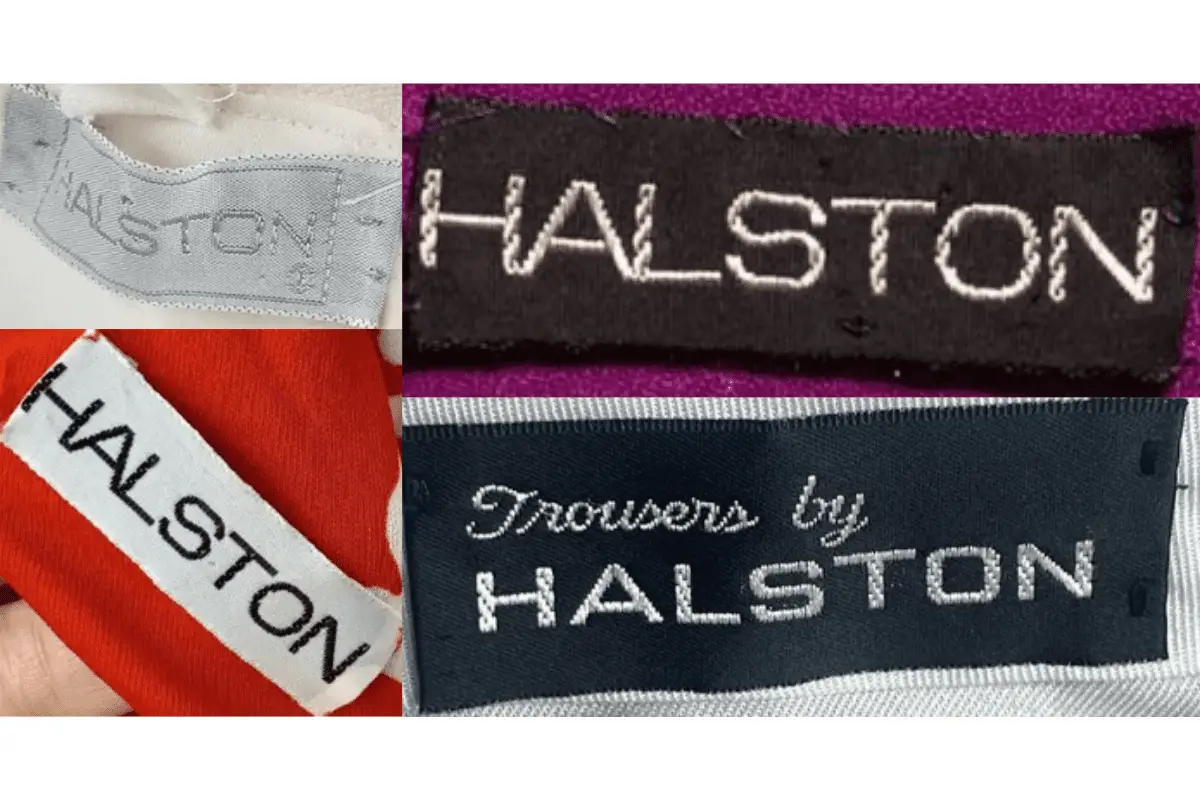
1970s Halston tags
1980s vintage Halston tags
- Introduction of additional lines like “HALSTON III” and “HALSTON JEANSWEAR” to indicate specific collections.
- Rectangular tags with a variety of lettering styles, from bold serif to sans-serif fonts.
- Color combinations like red on white or blue on denim, reflecting the casual wear lines introduced during this period.
- Some tags included materials information (e.g., “100% Polyester”) directly under the brand name.
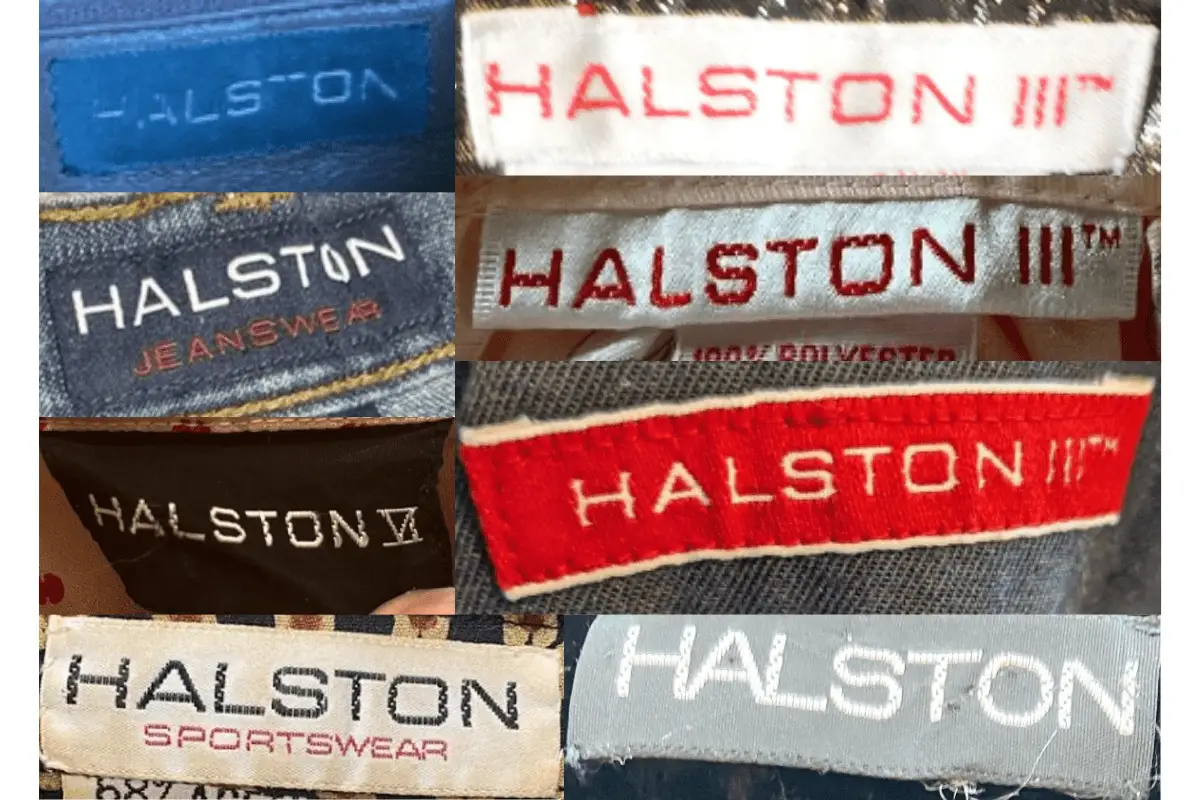
1980s Halston tags
1990s vintage Halston tags
- Tags became more modern, with cleaner lines and simpler fonts.
- Often featured “HALSTON” in a straightforward, sans-serif font, typically in white lettering on black tags.
- Some tags began incorporating the word “Heritage” to reflect the brand’s legacy.
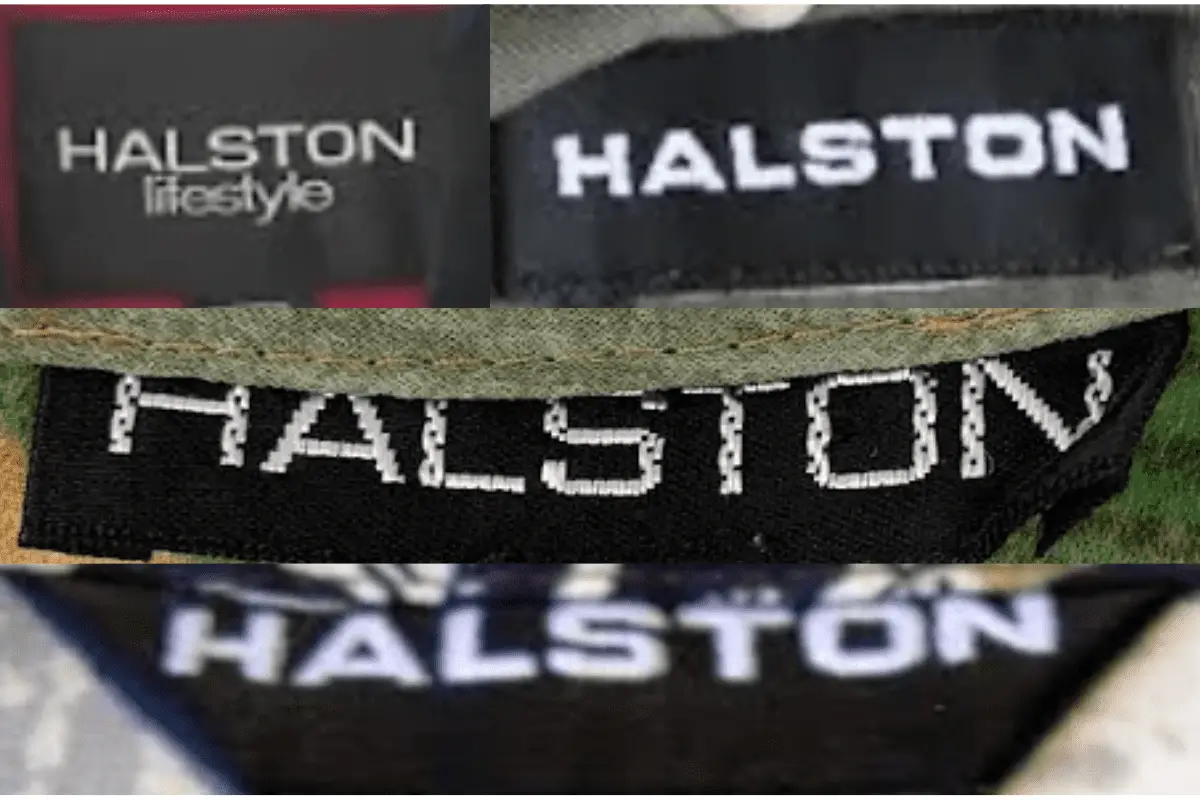
1990s Halston tags
2000s vintage Halston tags
- Continuation of the minimalist approach with the addition of “Heritage” branding on some tags.
- Tags are often black or white, with the brand name in simple, bold fonts.
- Incorporated some of the earlier design features, maintaining a connection to the original Halston aesthetic.
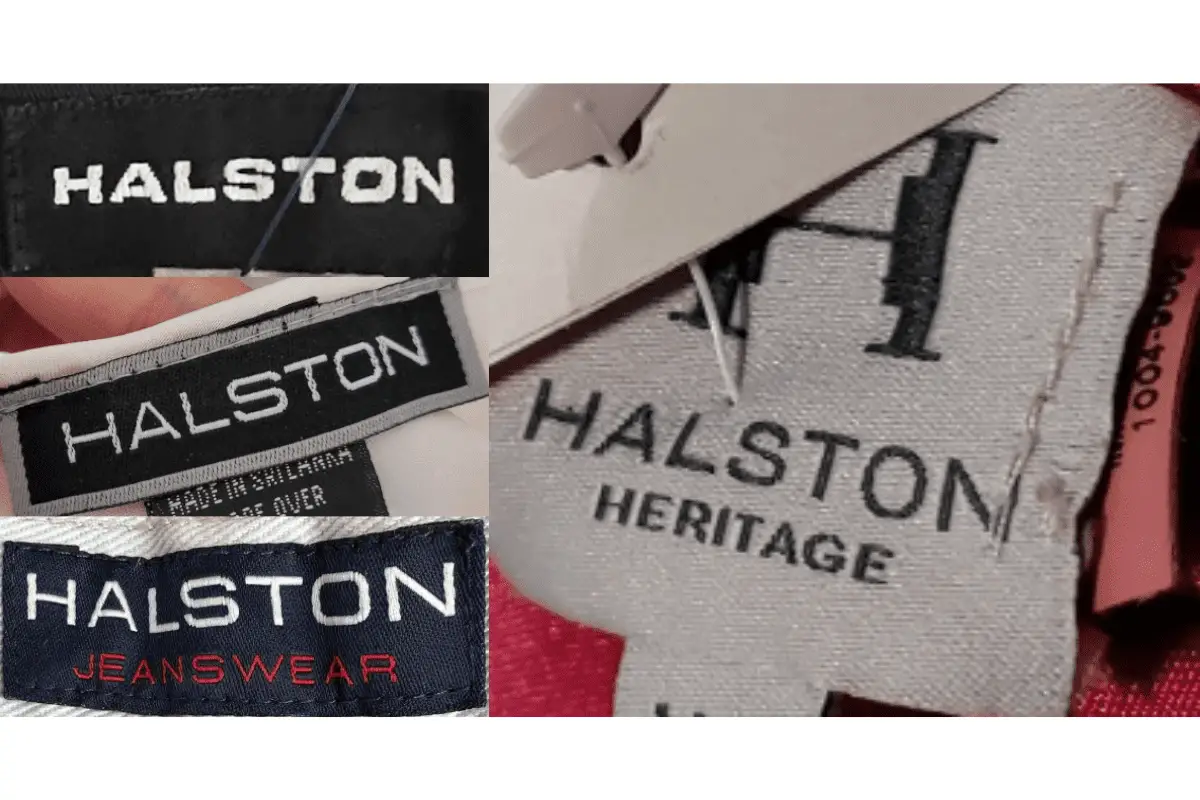
2000s Halston tags
2010s vintage Halston tags
- Introduction of a more diverse range of tag designs, including “Halston Heritage” as a key collection.
- Tags are often black with white or gray lettering, emphasizing a sleek and modern design.
- Various lines such as “Halston Lifestyle” appeared, marking the brand’s diversification in this period.
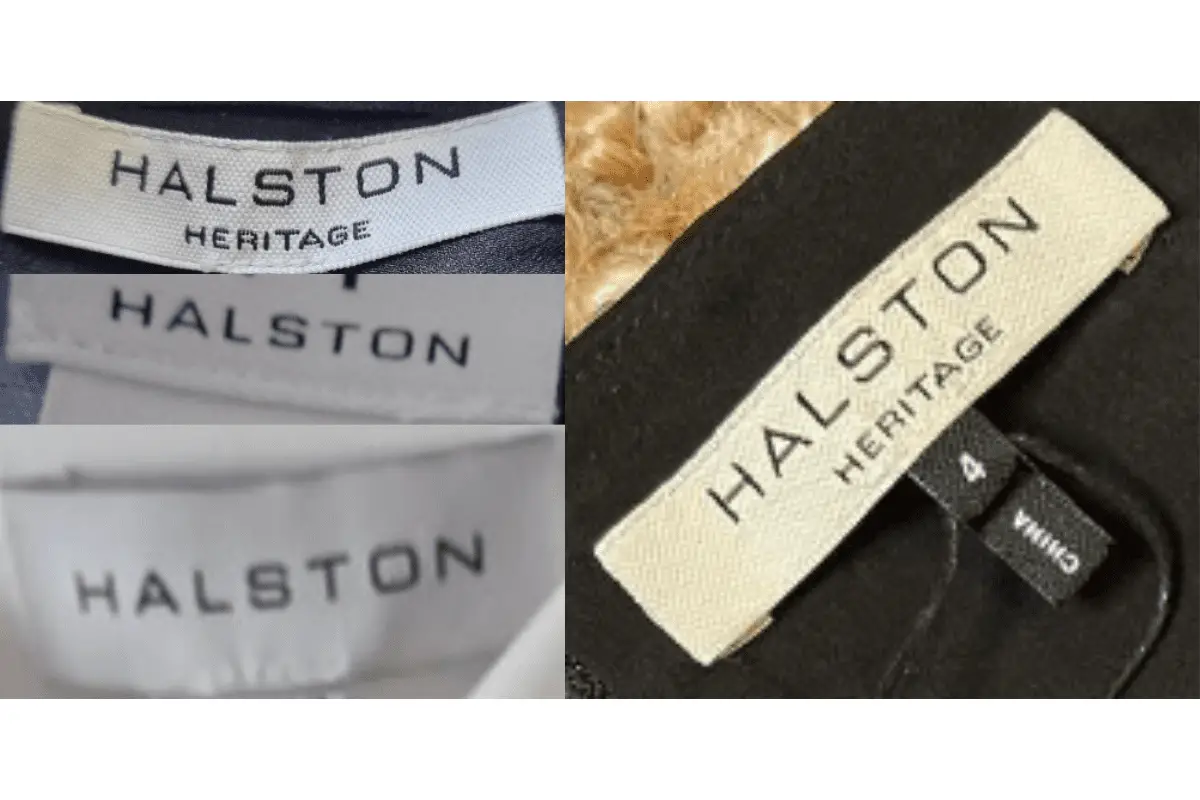
2010s Halston tags
